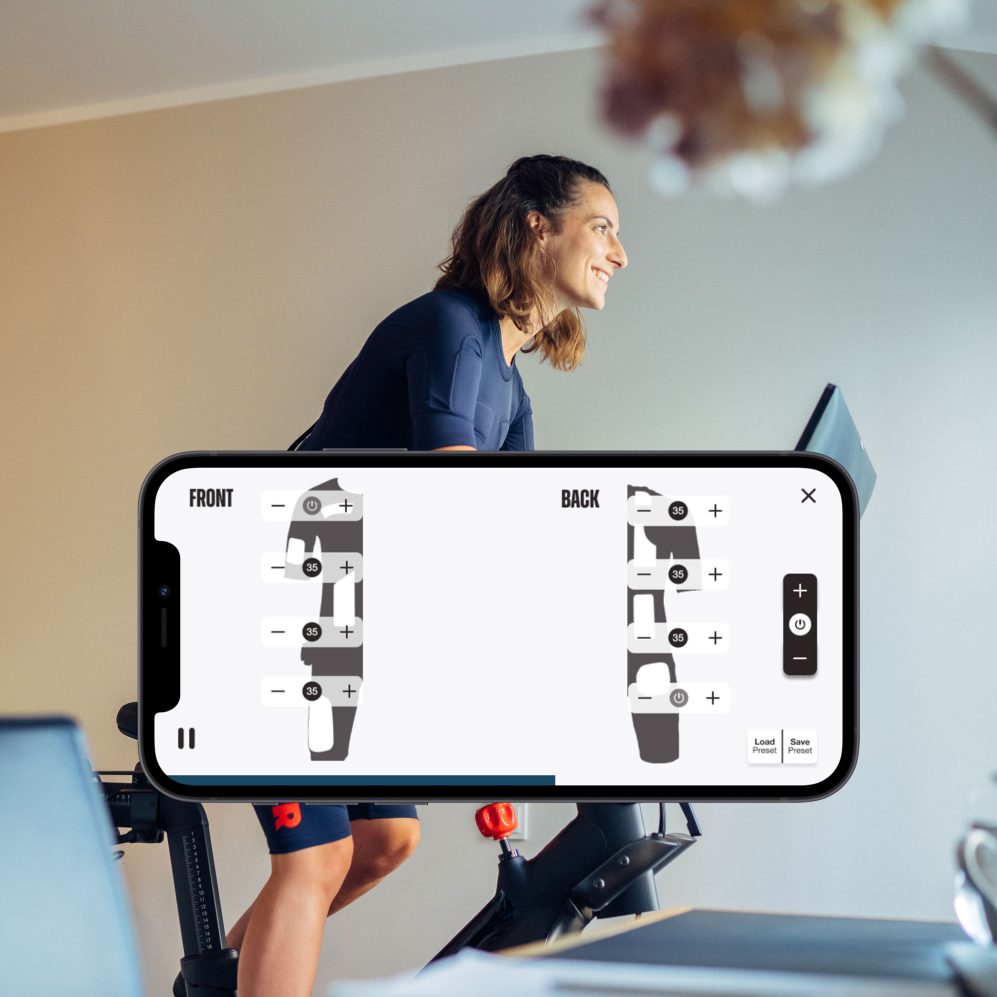EMS
Electronic muscle stimulation and muscle building
Are you curious about the potential of Electronic Muscle Stimulation (EMS) for building muscle strength? If so, you’ve come to the right place. In this article, we’ll dive into the science behind EMS and muscle building and explore whether or how it’s an effective way to build muscle.
What is Electronic Muscle Stimulation (EMS)?
Electronic Muscle Stimulation is a technology using electrical impulses to intensify muscle contractions. Originating in rehabilitation and physical therapy, it has become increasingly popular as a tool for building muscle and improving athletic performance in recent years.
How does Electronic Muscle Stimulation (EMS) work?
EMS sends electrical impulses to the muscles through electrodes placed on the skin. These impulses replicate the brain´s signals that cause muscle contractions, resulting in intensified muscle movement and results. By controlling the frequency, intensity, and duration of the impulses, EMS enables you to target specific muscle groups, enhancing strength, endurance, and flexibility.
EMS can be used on specific muscle groups, mostly used for rehabilitation processes in a passive manner. Alternatively, EMS can be used as full-body training, combining electronic muscle stimulation and static or dynamic strength training. The trainee can simultaneously engage all major muscle groups, leading to a very intense workout without stressing the joints. In that way, also muscular imbalances can be avoided or treated during training.
Now the question remains – how effective is EMS in muscle building?
A study conducted in 2019 published by the Journal of Strength and Conditioning Research looked into the effects of EMS combined with resistance training and found that the combination of the two resulted in greater gains in muscle strength and hypertrophy compared to resistance training alone. The positive effects of EMS on activating deeper, stabilizing muscles of the core and back, which can be difficult to target with traditional resistance exercises were further discovered.
Moreover, EMS plays a significant role in injury prevention as well as a workout regime for those with injuries. As found by the European Journal of Applied Physiology in 2017, EMS is an effective tool for improving muscle strength and size, particularly in individuals who are unable to engage in traditional resistance training due to injury, illness, or other limitations. This is largely due to its effects on improving neuromuscular control and coordination, which can help prevent injuries and improve athletic performance.
Several further studies have been conducted in the professional sports field and have shown a positive effect on muscle building in professional athletes. For example, EMS was found to enhance the maximal strength of professional soccer players as found by the Journal of Sports Science and Medicine. Similar results were found in a study on professional ice hockey players suggesting, “that EMS may be a useful means for developing muscular strength and skating speed in ice hockey players.” Specifically, the increase in strength of the knee extensor was found both in professional ice hockey and basketball players, subsequently leading to an increase in the player’s performance. In basketball, this was seen in improved vertical jump performance. Results like these have been found a multitude of times in a variety of studies, “confirming that brief periods of EMS have beneficial effects on muscle strength and specific abilities of highly skilled athletes.”
Many studies have been conducted in this specific field that prove the effectiveness of electronic muscle stimulation in strength training which have all come to a similar conclusion: EMS proves to have a positive effect on muscle building, particularly when combined with traditional resistance training.




